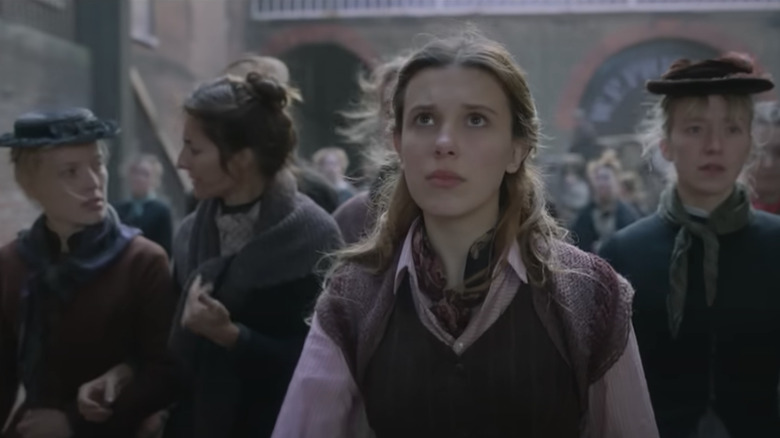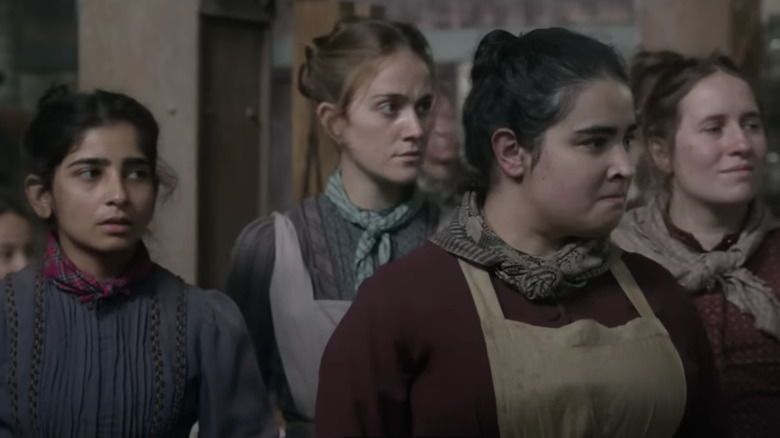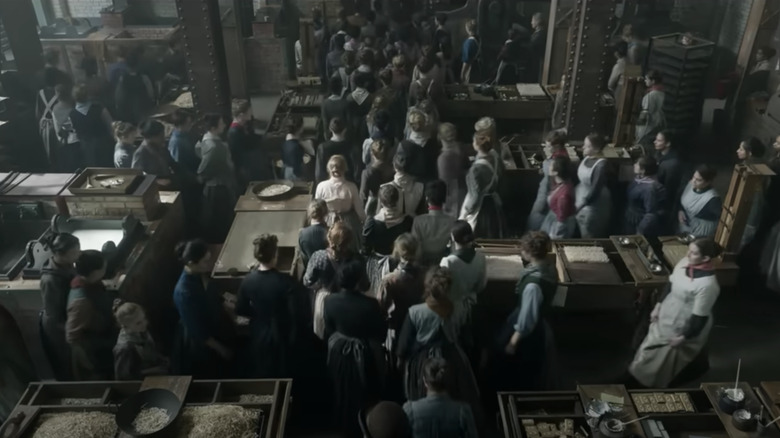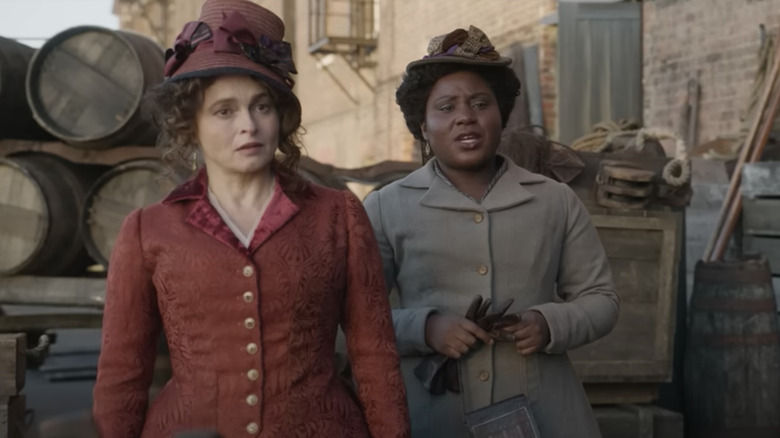Enola Holmes 2 Is Built Around An Actual Event, But How Much Is True?
Warning: Spoilers for "Enola Holmes 2" ahead.
It's happened, y'all. The spunky little detective better known as Enola Holmes is finally back. But unlike the fictional cases that turned Sir Arthur Conan Doyle's Sherlock Holmes into a wildly successful character, "Enola Holmes 2" sees his younger sister Enola (created by Nancy Springer, not Sir Doyle) get caught up in real-life events — namely, the matchgirls' strike of 1888, which was organized by employees of the Bryant & May match factory.
"Enola Holmes 2" doesn't try to hide the fact that it borrowed heavily from reality. An opening title card tells viewers that "the important parts" of the movie are true, while another at the closing acknowledges the strike and its effects. However, the Enola Holmes series is far from somber (we've previously called the first movie "mind candy in the very best sense," and while the second installation deals with its weighty material respectfully, it retains a delightful whimsy). Long story short, it's safe to assume that screenwriter Jack Thorne took some creative liberties when adapting the strike for the big- (medium- ?) screen, which poses a big question: just how much of the movie is true?
The real-life matchgirls faced horrific conditions
"Enola Holmes 2" sees its titular character search for Sarah Chapman, a missing matchgirl. In the process, Enola goes undercover as an employee at the Lyon match factory, where the factory owners are covering up the fact that new cost-saving yet dangerous phosphorus compounds pose major risks to employee health.
In real life, the conditions weren't much better. The Bryant & May factory used white phosphorus to cut down on costs even though they were likely aware that phosphorus poisoning caused major health issues (and extremely painful death). The company tried to cover the risks up, but while Lyon blamed the symptoms on typhus, Bryant & May took a much darker approach: once employees began to complain of toothaches (a common symptom of phosphorus poisoning), they were required to have the tooth pulled or would be fired. The working conditions were horrible, too: as we've previously mentioned, workers received extremely low pay and were frequently expected to work up to 14-hour shifts.
When it comes to the movie's corruption though, "Enola Holmes 2" becomes a work of imagination. There is no hard evidence to suggest that powerful individuals turned a blind eye to Bryant & May's abuse. However, they certainly would've had a motive: an 1892 article published in the Reynold's Newspaper noted that many politicians and their families owned Bryant & May shares, which paid impressive dividends. If a powerful investor wanted to ensure that his dividend returns remained high, it's possible that he might've tried to cover up the dangers associated with cheaper phosphorus — and while this may not have happened in real life, "Enola Holmes 2" takes advantage of the fact that fictional movies can play fast and loose with facts to paint a scary portrait of what could've transpired.
The revolution had a different spark
Much like its fictional counterpart, support for the real-life matchgirls' strike was spurred by poor working conditions. However, as far as we know, the 1888 protest was not set off by a dramatic speech. Instead, a chain of events brought it on: when reporter Annie Besant published an article exposing Bryant & May's poor working conditions, the company fired three women for supposedly providing her with information. They also tried to get their employees to sign a document which said they were happy with the factory's current working conditions. In response, 1,400 employees went on strike.
Both in-person and on-screen, Sarah Chapman was a driving force behind the strike. However, "Enola Holmes 2" took a few liberties with her story. In the movie, Chapman is in a relationship with William Lyon, heir to the Lyon fortune and an accomplice in the plot to expose the company's corruption, and eventually went into hiding to assure her own safety. But Chapman's disappearance was fictional and, as far as we know, she never had a secret romance with any company heirs. Ultimately though, the tweaks were relatively small and mostly in favor of moving the plot forward. "Enola Holmes 2" made good on its opening promise — all of the important details were in fact true.
Learning from the best
Given the fact that "Enola Holmes" was the type of bubble-gum girl-power movie that you could both feel good about showing to a young teen and enjoy as a delightfully unapologetic celebration of young-womanhood, it's really exciting to see the sequel take a page from real-life heroines. Enola's unconventional education at her mother's behest has always shaped her adventures — a wholesome reminder that we should look to strong examples in the past while blazing our own futures. But there's only so much that can be gleaned from a fictional character. Perhaps her circumstances were perfectly set up in a way that ours won't be; perhaps it's easier for courage to come from a screenwriter's pen than an individual's real-life worries.
By pointing towards the matchgirls' strike of 1888, "Enola Holmes 2" gives its viewers an example of real courage — one that's much more powerful than a fictional equivalent simply because actual people had to stand behind their convictions. The world of "Enola Holmes" may be full of impressive fictional women, but it's all the more refreshing to have examples of strong women from the real world, too.
"Enola Holmes 2" is currently streaming on Netflix.



